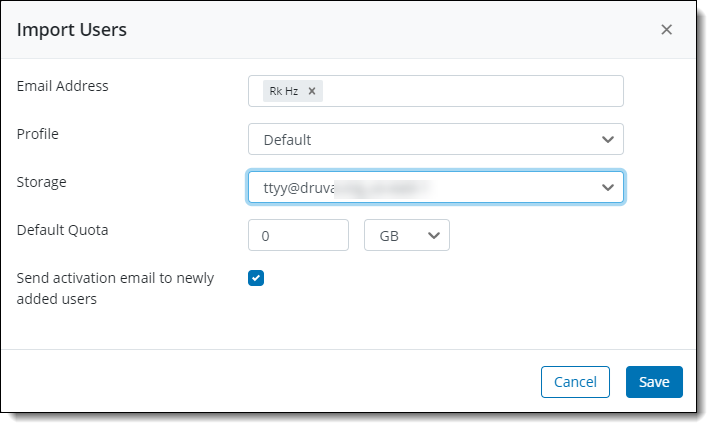Difference between Azure AD mappings v/s Manual Azure AD import
Overview
This article discusses the difference between Manual Azure AD import and Azure AD mapping even though both are part of the Azure AD deployment method.
Manual Azure AD import
Consider the following:
- For manual importing the users from Azure one by one, the M365 app connection status should be in connected status.
- You can quickly import and add a user(s) as per your need using the Import Users from Azure AD option.
Before you begin
Before you add users by importing information from Azure AD, ensure the following:
-
You or an administrator created the profile that you want to assign to the user.
-
The storage where you want inSync to back up the user data is present.
Procedure
-
On the inSync Management Console menu bar, click Users.
-
Click Import > Import Users from Azure AD. The Import Users window appears.

-
In the Import Users window, enter the following details:
-
Email Address: Search and enter the email address of the user(s) that you want to import.
-
Profile: Select a profile that you want to assign to the users that you import using Azure AD.
-
Storage: Select storage where the users' data should be backed up.
-
Default Quota: Provide a default storage quota per user as per your requirement. The default value is zero, which is unlimited storage.
-
Send activation email to newly added users: Select this check box to notify the newly added users via email. By default, this option is selected.
-
Click Save.
-
The end-user account is created instantaneously.
Perform the steps for each user account that is present on the Azure. This method is preferred if there is an urgent new user account present on Azure and has to be imported urgently.
Azure AD mappings
Consider the following:
- Microsoft 365 app on the inSync console has to be in a connected state. If the Microsoft 365 app isn't configured then follow the steps to Configure inSync for Microsoft 365.
- Azure AD mappings are a part of the Azure AD deployment method. This will allow the customers to provision the users on the Druva console from the Azure AD in bulk.
- Unlike the Manual Azure AD import method, Azure AD mapping will help the admin to import all the users from the Azure side which falls under the filter parameter that you specify while creating Azure AD mapping.
To create Azure AD mapping
For detailed instructions see, Create Azure AD Mapping.
- Using Azure AD mapping you can select to import all users from the Azure side by specifying the filter users option to “Allow any user”
- Also Azure AD mapping you can segregate users on the basis of the Azure AD attribute value
For example, you can mention on the Azure AD mapping only the users which have Azure AD attribute value department=engineering should only be provisioned to the Druva console.
Attributes for Azure AD mapping
For detailed instructions, see Attributes for Azure AD mapping.
- You can create multiple Azure AD mappings and define the profile settings and storage region to which the bulk users are going to be assigned rather than manually select storage profile settings for each and every individual user account like the Manual Azure AD import method.
- However, the end-user accounts aren’t created instantaneously like the Manual Azure AD import method.
- Once you create an Azure AD mapping, inSync automatically scans your Azure AD at a default sync interval of 60 minutes.

